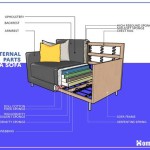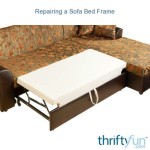How To Ship A Sofa: A Comprehensive Guide
Shipping a sofa, whether across town or across the country, requires careful planning and execution. Sofas are bulky, often delicate, and typically represent a significant financial investment. Understanding the proper procedures for preparing, protecting, and transporting a sofa is crucial to ensuring it arrives at its destination in the same condition it left. This guide provides a comprehensive overview of the steps involved in shipping a sofa successfully.
Preparing the Sofa for Shipment
The initial phase of shipping a sofa involves preparing it for the rigors of transport. This preparation minimizes the risk of damage and facilitates a smoother moving process. Key considerations include cleaning, disassembly, and meticulous documentation.
First, thoroughly clean the sofa. Remove any loose debris, vacuum the upholstery, and address any stains or spills. Cleaning the sofa not only presents it in a better condition upon arrival but also prevents the potential spread of dirt or allergens during transit. Consider using appropriate cleaning solutions for the specific type of upholstery, testing them on an inconspicuous area first. Allow the sofa to dry completely before proceeding.
Next, assess whether the sofa can be disassembled. Many sofas, particularly larger sectional models, are designed with removable legs, cushions, and even frame components. Disassembling the sofa, when possible, significantly reduces its overall size and weight, making it easier to handle and potentially lowering shipping costs. Carefully document the disassembly process, taking photographs or videos as a reference for reassembly. Store all hardware, such as screws and bolts, in labeled bags and securely attach them to the corresponding sofa components.
Creating a detailed inventory is essential. This inventory should include a description of the sofa, its dimensions (both assembled and disassembled), its weight, and its condition. Take high-quality photographs of the sofa from multiple angles, highlighting any existing imperfections, scratches, or tears. This documentation serves as a valuable record in case of damage during shipping, providing evidence for insurance claims.
Protecting the Sofa During Transit
Proper packing is paramount to protecting the sofa from damage during shipping. This involves using appropriate packing materials and techniques to safeguard the sofa from scratches, dents, and moisture. The level of protection required depends on the distance of the shipment and the sensitivity of the sofa's materials.
Begin by wrapping the sofa in furniture pads or blankets. These provide a cushioning layer that protects the upholstery from abrasion and impact. Secure the pads or blankets with packing tape, ensuring they are tightly wrapped around the entire sofa. Pay particular attention to corners and edges, which are most susceptible to damage. Use multiple layers of padding for extra protection, especially for long-distance shipments.
Next, wrap the padded sofa in plastic wrap or stretch film. This creates a moisture barrier that protects the sofa from rain, humidity, and spills during transit. Wrap the sofa tightly and completely, overlapping the layers to ensure a secure seal. Secure the plastic wrap with packing tape. For added protection, consider using shrink wrap, which conforms tightly to the shape of the sofa and provides a more robust moisture barrier.
Corner protectors are crucial for preventing damage to the corners of the sofa. These are typically made of cardboard or foam and fit snugly over the corners, providing a buffer against impacts. Secure the corner protectors with packing tape. For sofas with delicate legs, consider removing them and wrapping them separately in bubble wrap and padding. Label the legs clearly to ensure they are matched with the correct sofa components during reassembly.
For long-distance or international shipments, consider crating the sofa. Crating provides the highest level of protection, encasing the sofa in a sturdy wooden frame that can withstand rough handling. Professional crating services are available, or you can build a custom crate yourself if you have the necessary skills and materials. When crating the sofa, ensure it is securely fastened inside the crate to prevent movement during transit. Use padding and bracing to fill any empty spaces and prevent the sofa from shifting.
Selecting a Shipping Method
Choosing the right shipping method is critical to ensuring the sofa arrives safely and cost-effectively. Several options are available, each with its own advantages and disadvantages. Factors to consider include the distance of the shipment, the budget, and the required level of service.
For local moves or short-distance shipments, hiring a professional moving company is often the most convenient option. Moving companies specialize in transporting furniture and have the necessary equipment and expertise to handle sofas safely. Obtain quotes from multiple moving companies and compare their prices, services, and insurance coverage. Ensure the moving company is licensed and insured, and check their reviews online to assess their reputation. Discuss the specific requirements of the sofa shipment with the moving company, including any special handling instructions or access restrictions at the origin or destination.
For long-distance or interstate shipments, several options are available. Less-than-truckload (LTL) shipping is a common option for transporting furniture. With LTL shipping, the sofa is transported along with other freight on a shared truck. This can be a cost-effective option, but it may involve longer transit times and a higher risk of damage due to multiple handling points. Research and compare different LTL carriers, considering their prices, transit times, and insurance coverage. Ensure the carrier specializes in handling furniture and has a good track record of safe delivery.
Another option for long-distance shipments is hiring a dedicated furniture shipping company. These companies specialize in transporting furniture and offer a range of services, including packing, crating, and white-glove delivery. Dedicated furniture shipping companies typically provide a higher level of service and care than LTL carriers, but they may also be more expensive. Obtain quotes from multiple furniture shipping companies and compare their prices, services, and insurance coverage. Ensure the company is licensed and insured, and check their reviews online.
Freight shipping is another option for transporting a sofa long distance. This involves shipping the sofa as a single freight shipment using a freight carrier. Freight shipping can be a cost-effective option for large and heavy items, but it requires more effort on your part, as you are responsible for packing, loading, and unloading the sofa. Research and compare different freight carriers, considering their prices, transit times, and insurance coverage. Ensure you have the necessary equipment and resources to handle the sofa safely, or consider hiring a professional moving company to assist with the loading and unloading process.
Once you have selected a shipping method, carefully review the terms and conditions of the shipping contract. Pay particular attention to the insurance coverage, liability limitations, and claim procedures. Ensure the insurance coverage is adequate to cover the value of the sofa in case of damage or loss. Retain a copy of the shipping contract and all related documents for your records.

How Much Does It Cost To Ship A Sofa

Ship A Sofa Overseas For Less With Ladingo Israel21c

How To Ship Furniture Red Stag Fulfillment

The Easiest Way To Ship A Couch Roadie

Furniture Made Easy Uship Services

How To Ship A Single Piece Of Furniture Freightcenter
What Is The Est Way To Ship Furniture Another State Quora

Ship Furniture From Dubai In 4 Easy Steps

Sofa Box New Haven Moving Equipment

Ship Furniture Marine Sofa Wooden Tea Table Aluminium Honeycomb Panel Laminated With Hpl Pullman Bed Mattress Accommodation Jiangyin Minsun Technology








